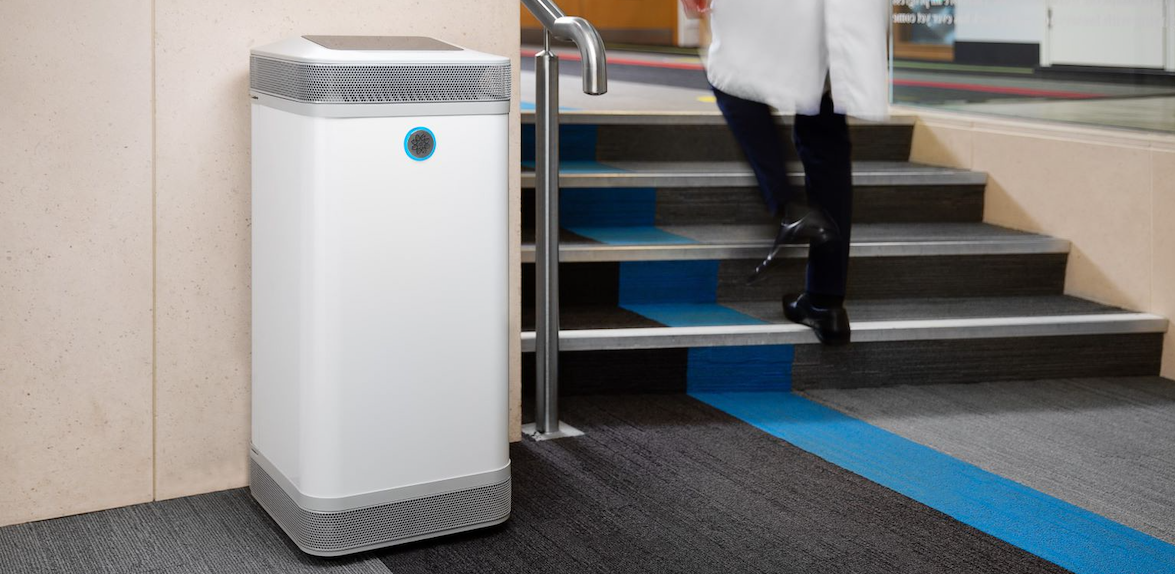Healthcare
Help reduce the risk of healthcare acquired infections
Inactivate airborne pathogens in healthcare environments.
WellAir’s air disinfection solutions bring effective and proven medical-grade indoor air quality solutions to healthcare settings, including clinics, hospitals, day-surgery offices, long-term care facilities, and dental offices to protect patients, frontline employees, staff, and the community.
For patients who are at heightened risk for healthcare-acquired infections (HAIs) due to the severity of their illness, such as ICU or Oncology patients, WellAir’s Defend line of portable air disinfection solutions, can help capture and destroy 99.99% of harmful airborne contaminants including viruses, bacteria, mold, smoke, allergens, pollen, VOCs, and more.
Read our latest peer-reviewed study that highlights the number of microorganisms in the air and evaluates the effectiveness of WellAir's air disinfection solutions in reducing the rate of nosocomial infections within the ICU.
Viruses
Inactivate airborne and surface viruses before they infect vulnerable patients.
Particles
Reduce fine particulate matter that can get trapped in the lungs.
Bacteria
Inactivate airborne and surface bacteria to prevent infection.
HVAC Air Purification
The Plasma Air and PlasmaPURE HVAC air purification units can be easily incorporated into new or existing HVAC systems, reducing energy consumption and providing a healthy, productive environment for healthcare facilities. The Plasma Air products are easy to install and require little to no maintenance. Our entire HVAC portfolio of products is UL 2998 validated for zero ozone emissions.
Portable air disinfection
Wherever people are coming and going, pathogens and pollutants are being introduced to the indoor environment. WellAir's portable air disinfection devices and air cleaning systems use our patented NanoStrikeTM Technology to inactivate aerosolized viruses, bacteria, and fungi. Our Defend range of FDA-cleared Class II medical devices combines our powerful NanoStrike Technology with a triple-stage filtration system. These devices not only inactivate pathogens but clear the air of pollutants such as pollen, particulate matter (PM), volatile organic compounds (VOCs), gases, chemicals, and odors.
Healthcare-acquired infections
Why Disinfect the Air
Healthcare-acquired infection (HAI) is a serious and widespread problem with an estimated 1 in 10 patients acquiring an infection during a hospital stay. In American hospitals alone, the Centers for Disease Control (CDC) estimates that HAIs account for an estimated 1.7 million infections and 99,000 associated deaths each year.
Over 30% of healthcare-acquired infections possibly involve airborne transmission at some point.
The Importance of WellAir Air Cleaning and Purification Devices in Intensive Care Units
This peer-reviewed study was published in the Journal of Hospital Infection reports on WellAir Air Cleaning and Purification Devices in an ICU. This first-of-its-kind study highlights the number of microorganisms in the air and evaluates the effectiveness of air purifiers in reducing the rate of nosocomial infections within the ICU.
The Defend 400 Significantly Reduces Airborne Bacteria in an Urgent Care Outpatient Facility
An urgent care outpatient facility located in New Jersey that was running at normal capacity and actively treating patients tested the Defend 400 at one of their three locations in November 2021. Testing was carried out in a breakroom, examination room, nurse station and waiting room.
During the 5 consecutive days, the Defend 400 significantly reduced total bacterial count by 52%, including a 60% reduction in opportunistic pathogens and a 43% reduction in pathogenic bacteria.
